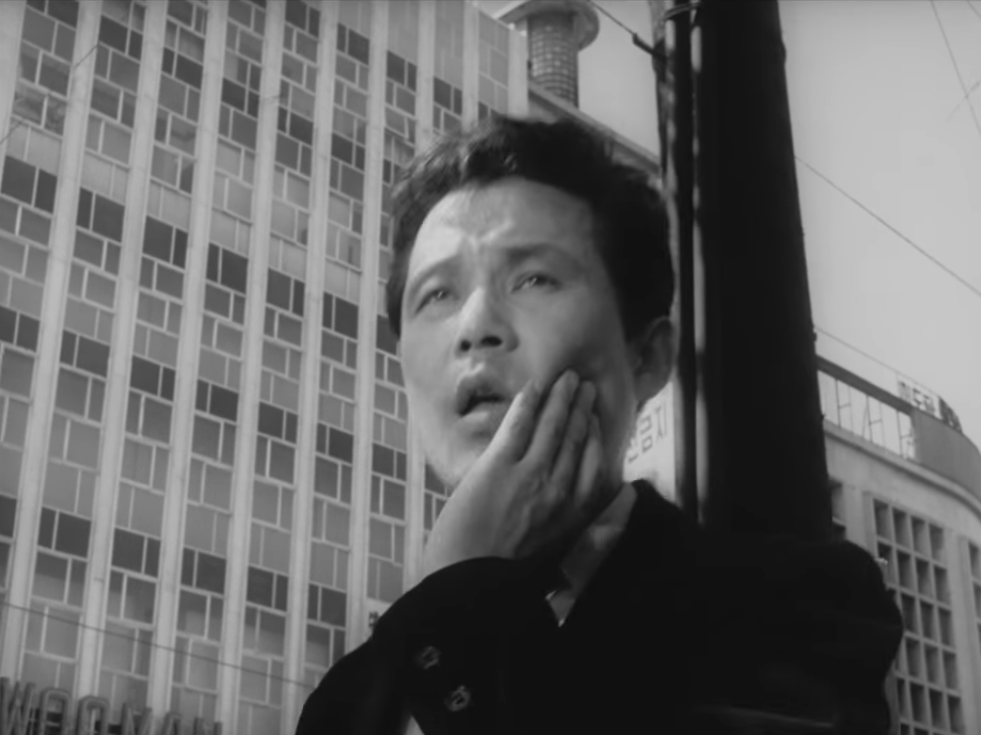
South Korean films, as even casual foreign viewers come to believe, are meant to critique South Korean society. To the extent that this precept holds true, the country’s most acclaimed films bring its society in for the severest treatment: take Lee Chang-dong’s Burning (버닝), to name a recent example, or Bong Joon-ho’s Parasite (기생충), to name a more recent and more widely celebrated one. Looking back to the pictures most often named as the masterpieces of Korean cinema, one finds even harsher indictments, none perhaps harsher — nor more highly praised for its artistry — than Yu Hyun-Mok’s Aimless Bullet (오발탄). Shot in 1960, less than seven years after the armistice agreement that put the Korean War on hold, the film takes such a bitter view of life in the developing South Korea that the country’s government almost suppressed it entirely.
It took an outsider, so the story goes, to clearly perceive the artistic virtues of Aimless Bullet, specifically an American consultant to the Korean National Film Production Center. That consultant persuaded the Korean government to at least allow the movie enough of a release in Seoul that it might qualify for foreign film festivals. Despite being quickly pulled from Korean theaters, it eventually played at the 1963 San Francisco International Film Festival (the sole surviving print used for the Korean Film Archive’s extensive 2015 restoration) and met with praise from the likes of Variety, whose critic praised its “brilliantly detailed camera work” as well as its “probing sympathy and rich characterizations.” The aesthetics and themes would have seemed broadly similar to those of the Italian neorealists, filmmakers whose work was still in vogue in America at the time. Yu credited Bicycle Thieves as an influence on his style, and the like of Vittorio De Sica and his cohort had already prepared Western audiences to find cinematic interest in downtrodden people and war-torn places.
By the looks of it, people didn’t come much more downtrodden in the early 1960s than South Koreans. Adapting a novella by Yi Beomseon, Yu find his main characters in a hillside shantytown home to refugees from the north the peninsula displaced by the war. In one of its houses live two brothers: Cheol-ho, a clerk at an accounting firm with two children and a pregnant wife, and Yeong-ho, a wounded former soldier and current hard-drinking wastrel. Their sister Myeong-suk out-earns the both of them by going on “dates” with American soldiers. Traumatized into a kind of living death, their mother never leaves her bed, repeating the same phrase day and night, sometimes muttering and sometimes shouting: “Let’s get out of here!” (This line in particular is supposed to have been a point of contention with the South Korean censors, who thought she meant they should all go back to the north.)
Read the whole thing at the Los Angeles Review of Books.